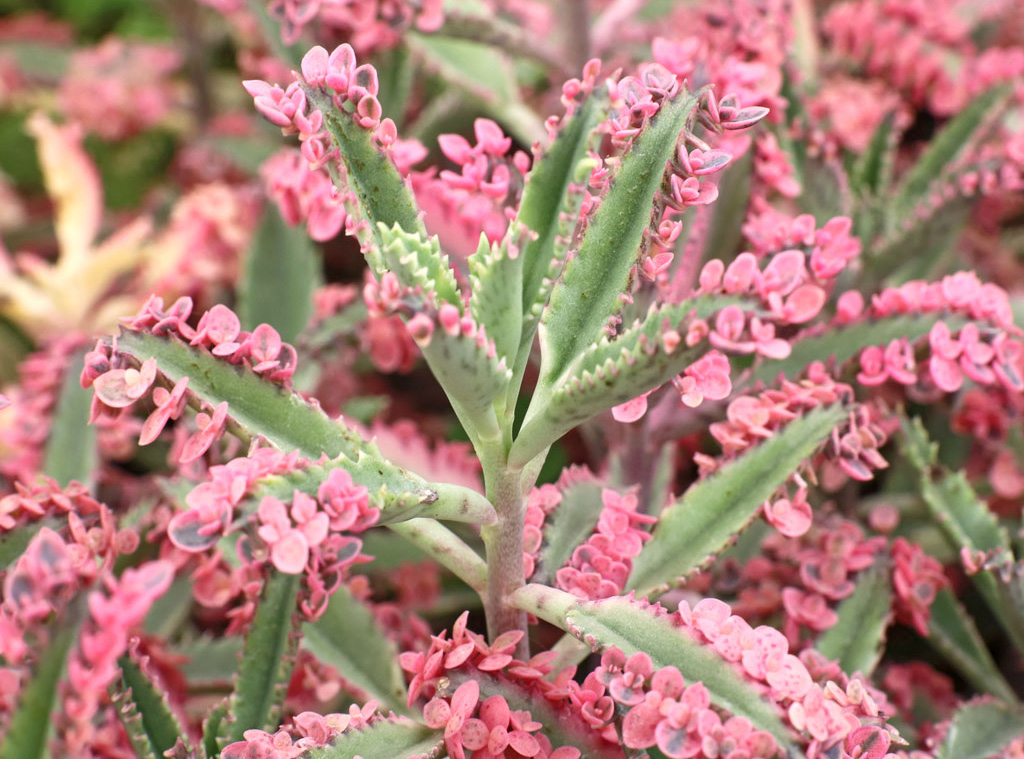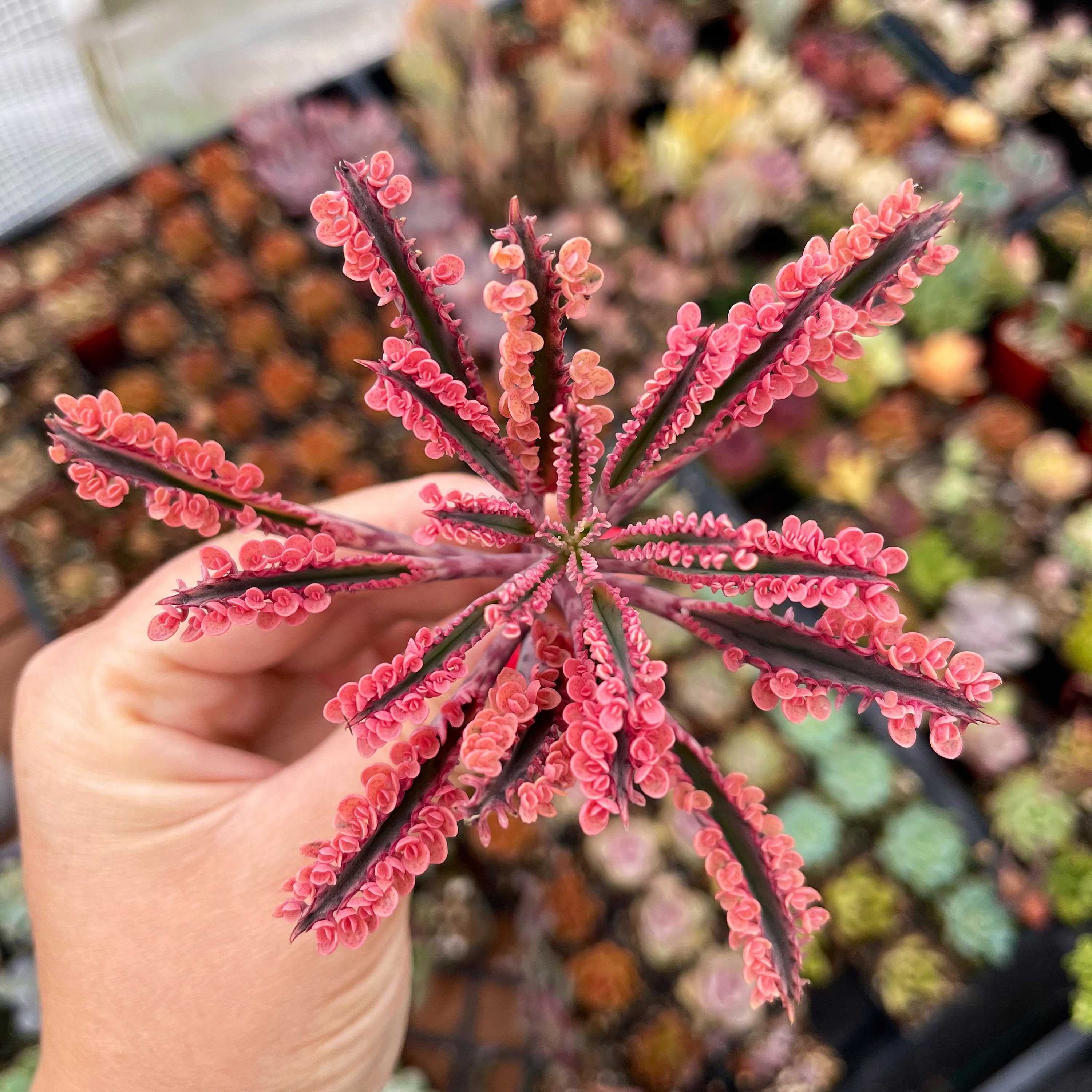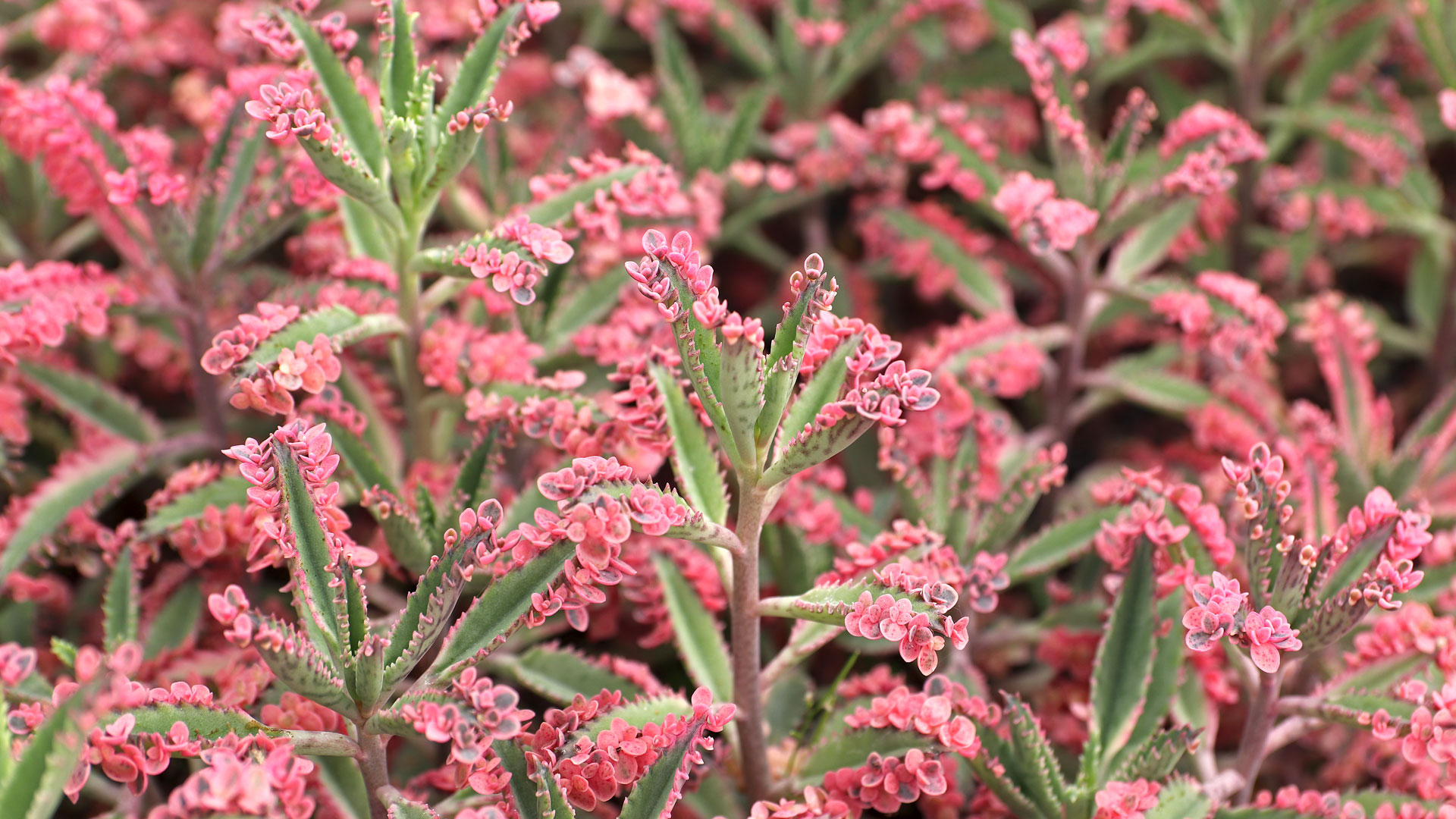‘Pink Butterflies’ is an eye-catching succulent with green leaves covered with spots, and featuring bright pink plantlets along the edges. Similar to its parent plants, Kalanchoe delagoensi and Kalanchoe daigremontiana, it is reported to be monocarpic, meaning it will only bloom once in its lifetime, usually taking several years before its pink flowers emerge in the fall.
Table of Contents
Care and Propagation Information
Kalanchoe ‘Pink Butterflies’ is a great way to add a touch of beauty to your garden without the hassle of its parent plants, which spread quickly and easily due to the propagation of plantlets. This variety of Kalanchoe is much more manageable for gardeners, as it does not root as easily from plantlets, allowing for it to be planted in more varied locations.
If you intend to cultivate it indoors, ensure that it is exposed to a grow light or placed in a bright window.
Watering
The care requirements for ‘Pink Butterflies’ are similar to those of most succulents. The best way to water it is to use the “soak and dry” method, allowing the soil to dry out completely between waterings. During summer, the succulent may go dormant, so it should be watered less frequently during that time. In the winter, it should also be watered less.
Be sure to grab our FREE watering guide to learn how to figure out if your succulents are getting too much moisture, as well as how to bring them back from the brink of death if needed.
Where to Plant
If you live in an area with cold winters (less than 30° F (-1.1° C)), it is a good idea to plant Kalanchoe ‘Pink Butterflies’ in a container that you can bring indoors. This succulent does best in partial sun or partial shade.
Due to the variegation of the plantlets on this succulent, they are unable to make their own chlorophyll.
Put this succulent in a spot that has a lot of natural light but is also somewhat shaded, such as a windowsill or porch. It is more prone to burning due to its variegated leaves, so take extra care when choosing a spot for it. A terra cotta pot would be ideal.
How to Propagate Kalanchoe ‘Pink Butterflies’
The most straightforward method of propagating ‘Pink Butterflies’ is to take stem cuttings. This will yield more plants than simply growing plantlets, and is a simpler process.
Cuttings
To propagate ‘Pink Butterflies’ from cuttings, take a sterile, sharp knife or a pair of scissors and cut off a stem from the main plant. Allow the stem to dry out and form a callous for a few days before planting it in a soil that drains well. Make sure to keep the soil moist, but not overly wet, by watering it once the top layer has completely dried out.
Plantlets
It can be challenging to propagate ‘Pink Butterflies’ from its vibrant pink plantlets; however, it can be done. To separate a plantlet from the mother plant, carefully tug on the leaf.
You can give the plantlets a day or two to form a protective layer over their cut surfaces, then transfer them to soil that drains easily.
You can also care for the plantlets like you would with germinated seeds. Put them in soil that drains well and then cover the container with plastic to make a mini-greenhouse. Allow the plantlets to grow under the plastic until they have developed roots, and then transfer them to their own individual pots.
Be sure to provide adequate lighting for the plantlets so that they can establish roots.
Care and Propagation Information
General Care for Kalanchoe ‘Pink Butterflies’
If you intend to cultivate it indoors, ensure that it is exposed to a grow light or placed in a bright window.
Watering
The care requirements for ‘Pink Butterflies’ are similar to those of most succulents. The best way to water it is to use the “soak and dry” method, allowing the soil to dry out completely between waterings. During summer, the succulent may go dormant, so it should be watered less frequently during that time. In the winter, it should also be watered less.
Be sure to grab our FREE watering guide to learn how to figure out if your succulents are getting too much moisture, as well as how to bring them back from the brink of death if needed.
Where to Plant
If you live in an area with cold winters (less than 30° F (-1.1° C)), it is a good idea to plant Kalanchoe ‘Pink Butterflies’ in a container that you can bring indoors. This succulent does best in partial sun or partial shade.
Due to the variegation of the plantlets on this succulent, they are unable to make their own chlorophyll.
Put this succulent in a spot that has a lot of natural light but is also somewhat shaded, such as a windowsill or porch. It is more prone to burning due to its variegated leaves, so take extra care when choosing a spot for it. A terra cotta pot would be ideal.
How to Propagate Kalanchoe ‘Pink Butterflies’
The most straightforward method of propagating ‘Pink Butterflies’ is to take stem cuttings. This will yield more plants than simply growing plantlets, and is a simpler process.
Cuttings
To propagate ‘Pink Butterflies’ from cuttings, take a sterile, sharp knife or a pair of scissors and cut off a stem from the main plant. Allow the stem to dry out and form a callous for a few days before planting it in a soil that drains well. Make sure to keep the soil moist, but not overly wet, by watering it once the top layer has completely dried out.
Plantlets
It can be challenging to propagate ‘Pink Butterflies’ from its vibrant pink plantlets; however, it can be done. To separate a plantlet from the mother plant, carefully tug on the leaf.
You can give the plantlets a day or two to form a protective layer over their cut surfaces, then transfer them to soil that drains easily.
You can also care for the plantlets like you would with germinated seeds. Put them in soil that drains well and then cover the container with plastic to make a mini-greenhouse. Allow the plantlets to grow under the plastic until they have developed roots, and then transfer them to their own individual pots.
Be sure to provide adequate lighting for the plantlets so that they can establish roots.
FAQ
What is the scientific name for the pink butterfly Kalanchoe?
Kalanchoe Pink Butterflies produces hundreds of small plantlets on their leaves, which easily drop off and quickly take root, eventually outgrowing the original parent plant.
What plant is pink mother of a thousand?
This plant, known as Pink Butterfly or Pink Mother of Thousands, is a 3-inch pot of Kalanchoe with beautiful pink blooms.
What plant is the mother of a thousand pups?
is a popular houseplant
Kalanchoe daigremontiana is a common houseplant often found in homes.
Are Kalanchoe good for butterflies?
The vibrant kalanchoe is a magnet for bees, butterflies, and birds.
What caterpillar eats kalanchoe?
In the springtime, the Red Pierrot butterfly often visits Kalanchoe plants, drawn by the flowers. However, the butterfly has another purpose in mind; the leaves of the plant are a favourite food of its caterpillars.



